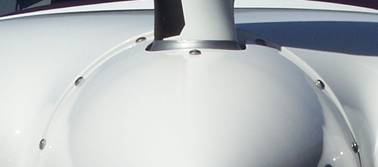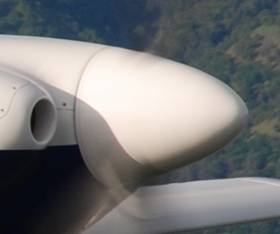
Aircraft in LOBO photo

N91CZ
Chris Zavatson
N91CZ
360std
www.N91CZ.com
=========================================
Rob,
A well built normally aspirated cowl setup with no internal engine
cooling plenum is subject to high internal upper cowl pressures (ballooning of
the upper cowl), low air
pressure over the top of the cowl and some high pressure on the
underside of the cowl. This leads to cowl distortion and lifting.
A perfect example is the picture of the aircraft on the LOBO home
page (
http://lancairowners.com/ ) - notice the
cowling quite a bit higher than the prop spinner. I spent some
time on my own aircraft trying to figure out how bug splatter could be on
the upper 3/4" face of the cowl right behind the spinner when everything
lined up so nicely on the ground. Read on.......
Builders, like myself, that used Camloc fasteners (spring loaded)
find that there is a lack of rigidity - that is the cowl can move under the
forces encountered in flight. Those builders that made extensive
use of hinges or screws would find much more rigidity and less opportunity for
the cowl to lift during flight.
If the bottom air exit bulge is not supported as Lancair recommended
(stiff arm between the bottom and the firewall), it can certainly
deform. One way to eliminate the support and obtain stiffness is to
consider the use of some extra foam and carbon along the trailing edge. Rather than a
sharp edge that creates turbulence, drag and a virtual reduction in the
air exit size, consider a flared exterior ala some Diamond aircraft
and/or some interior build up to form a sort of nozzle effect to accelerate
the exit air. Either or both will stiffen that part of the cowl.
Good Luck,
Scott
Krueger